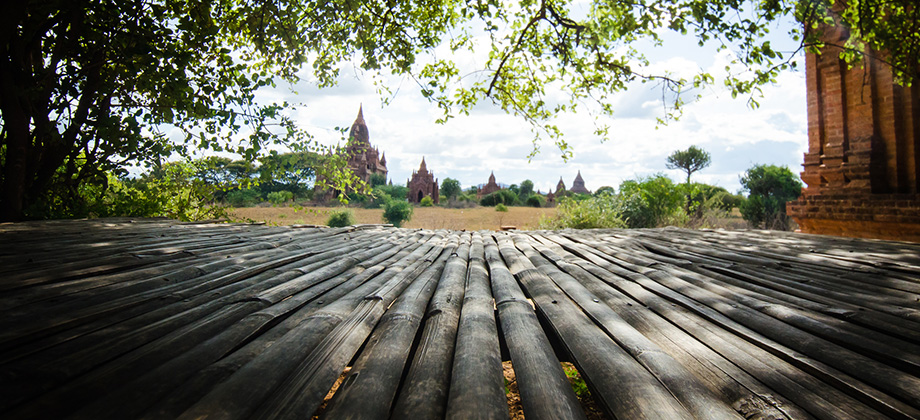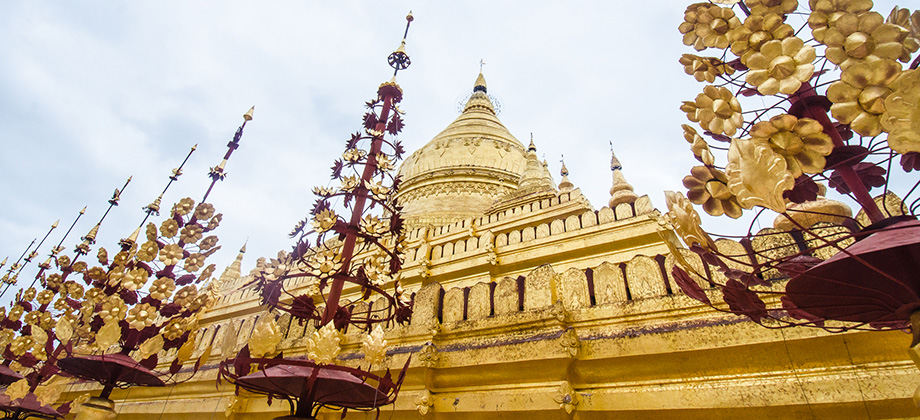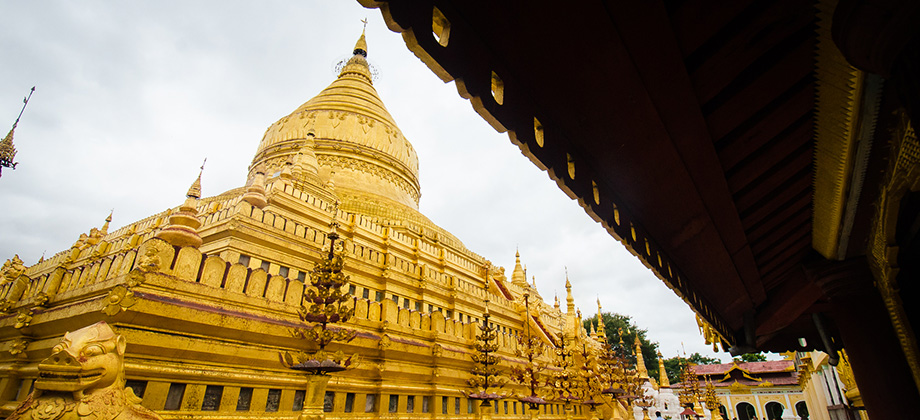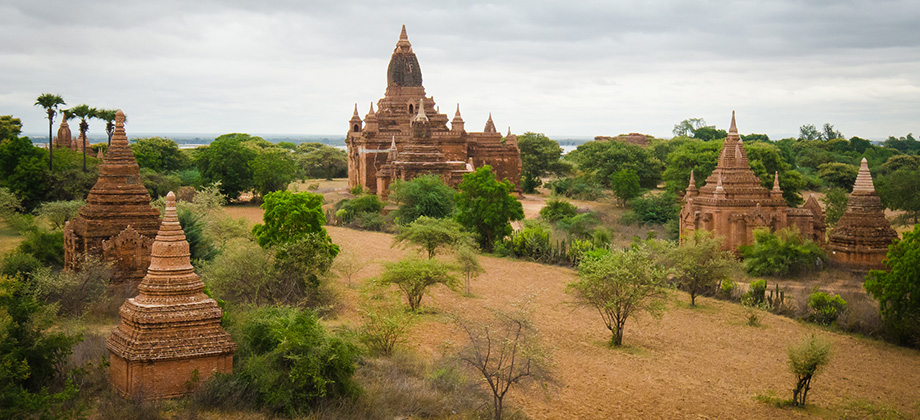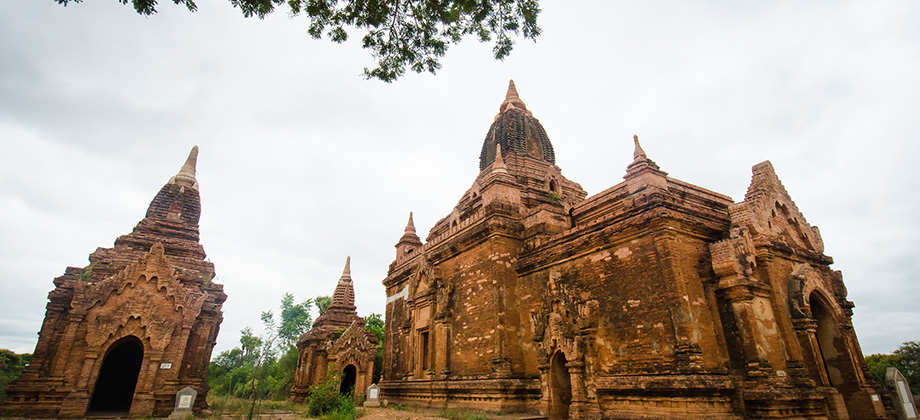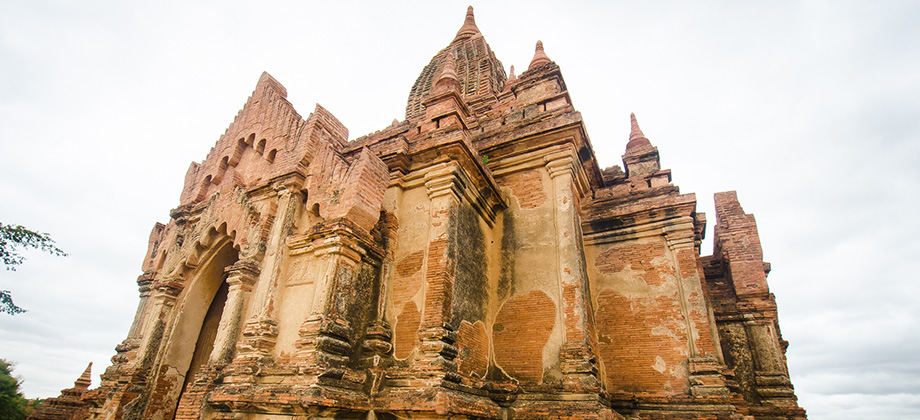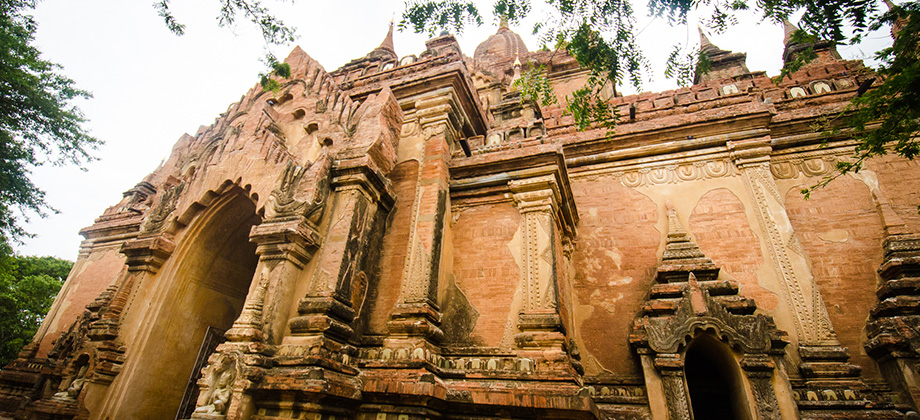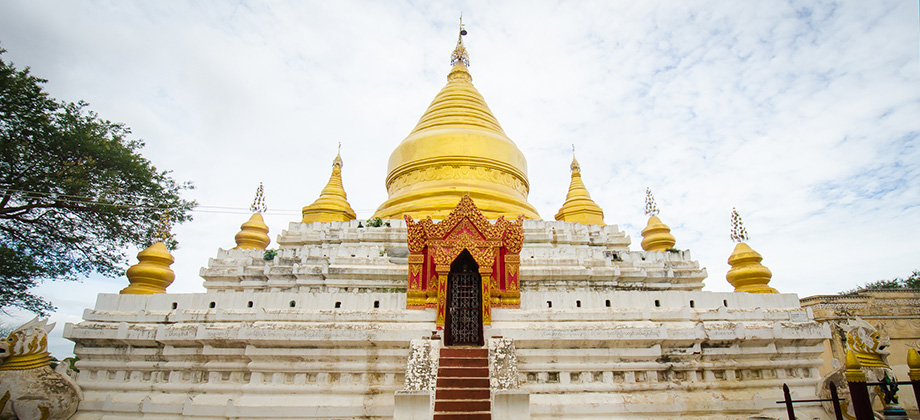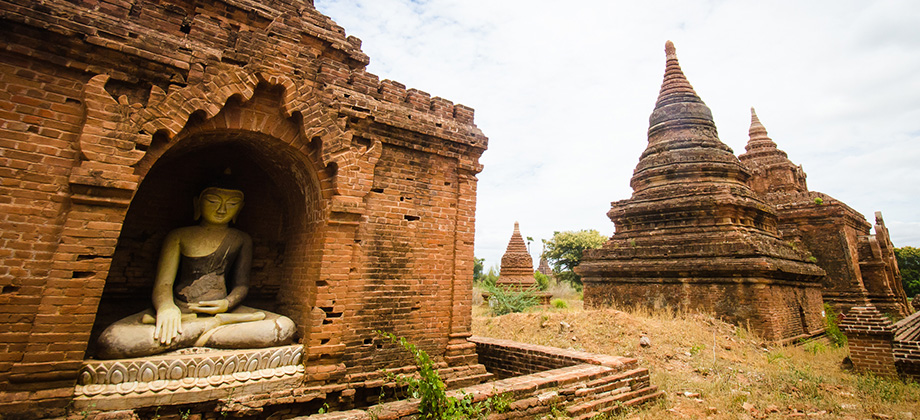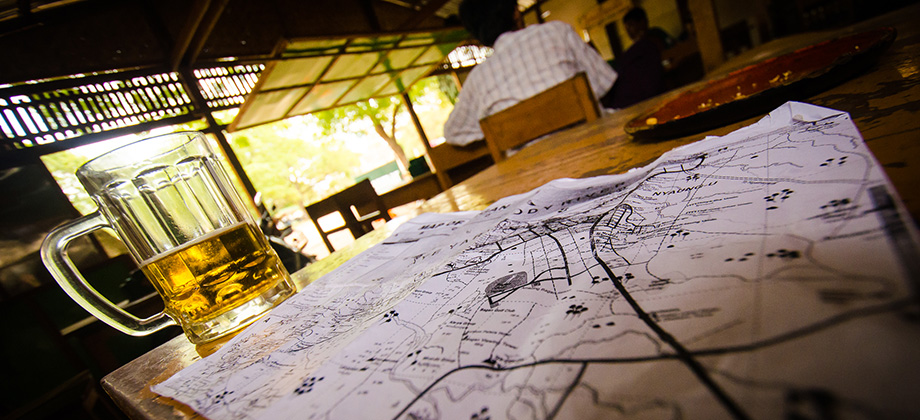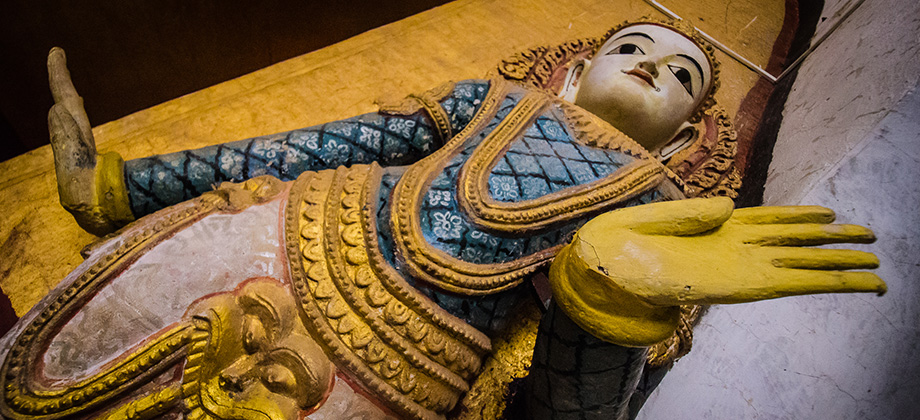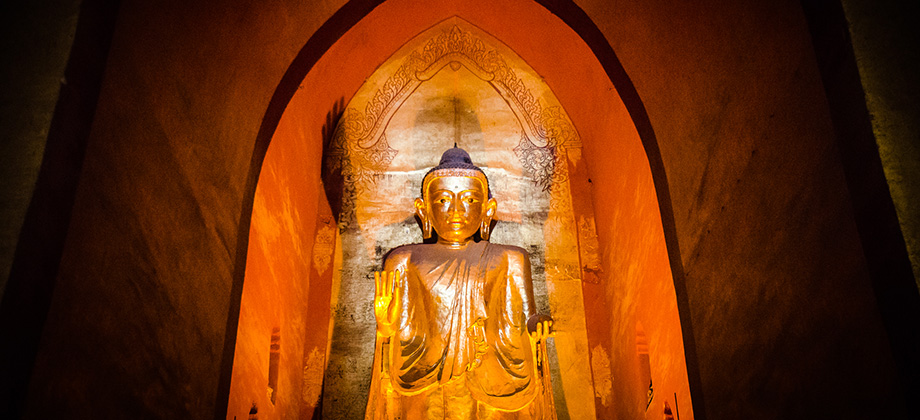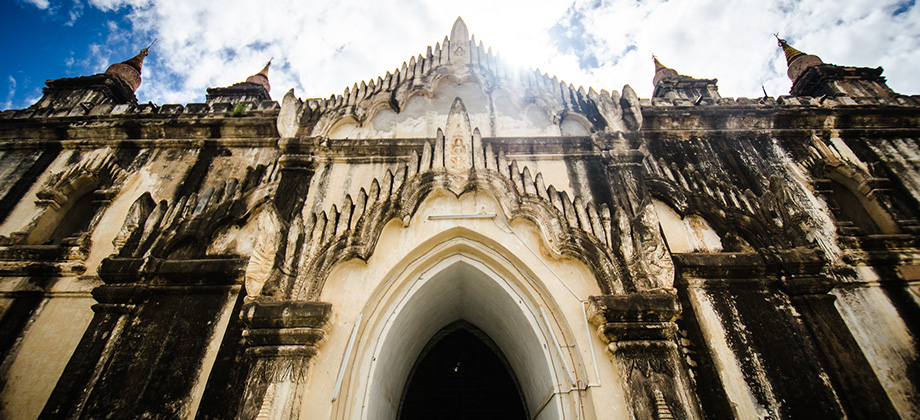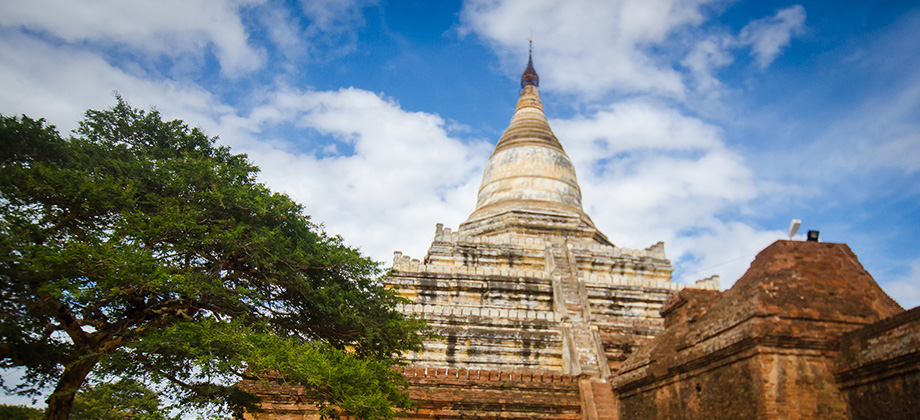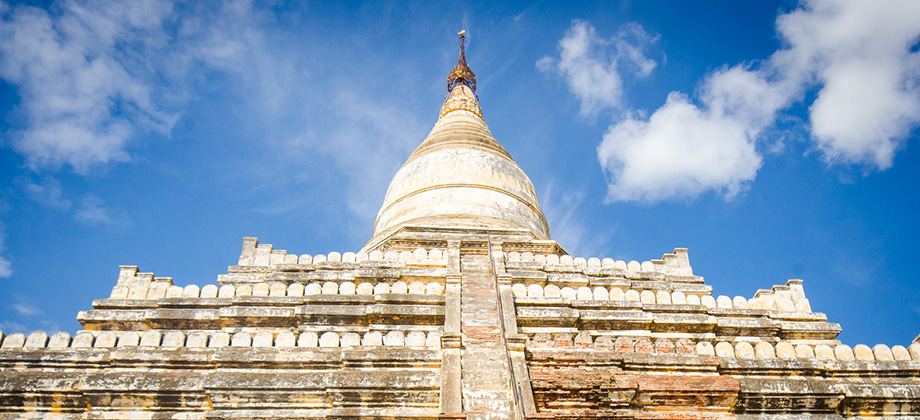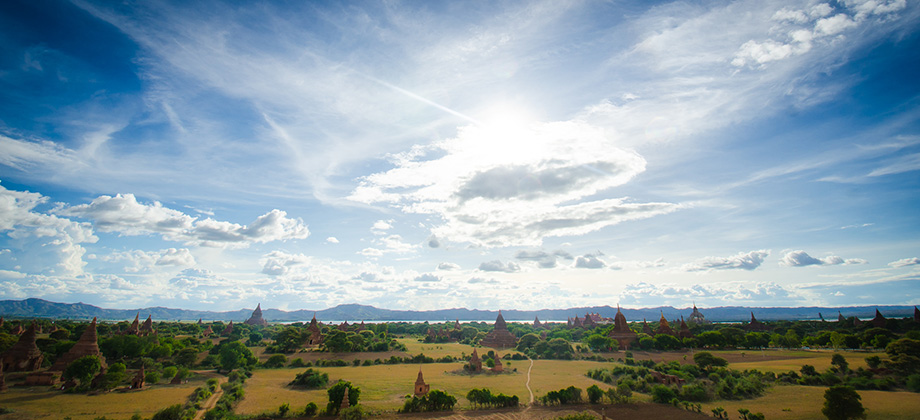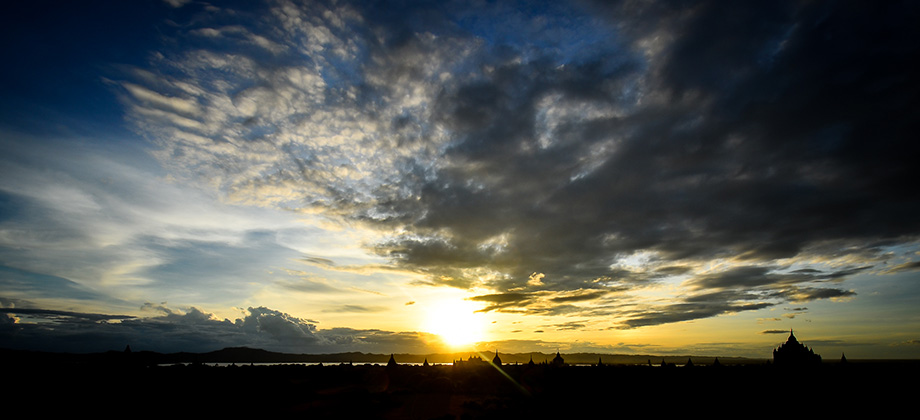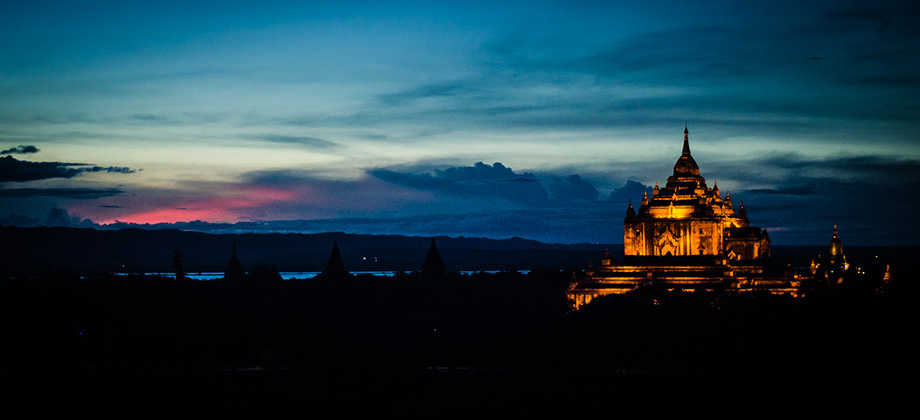Bagan
The Temples of Bagan
I climbed out of the Shwe Mandalar express bus groggily and somewhat curmudgeonly after being rudely awoken by the strident cry of the bus driver just as the bus squeakily rolled to a stop. Despite the lack of sleep, I found to my surprise that the bus ride had been far more comfortable than I had anticipated. For some reason I had expected the eight and a half hour ride to be on a cramped and very crowded bus that was not too dissimilar to the one that I had taken to get to Bromo. This was most likely due to all the horror stories of the road conditions in Myanmar that I had heard, stories that I think are probably only applicable to rural areas and possibly the ride from Bagan to Inle Lake. The bus had departed from the Aung Mingalar Bus Terminal in Yangon (also known as the Highway Bus Station), which can be reached from the airport by taxi for about MMK5000. The bus terminal is much closer to the airport than the city of Yangon itself as it is located on Pyay Road so it would naturally cost a bit more if one was to take a taxi from Yangon. Buses to Bagan, which had cost me MMK15000, only departed at 07:00 and 19:00. Since I had chosen the latter, I arrived in Nyaung-U at 04:30! The sun had yet to rise when I arrived so I decided to just walk around the deserted, dark roads of the small town until the town started to stir from its deep slumber.
Getting There
Bagan is located right on the banks of the Irrawaddy River, and is 42 square kilometres of approximately three thousand Buddhist pagodas, temples, and monasteries, with a large number of them dating back to the 11th century. Bagan was also apparently once described by Marco Polo as a "gilded city alive with tinkling bells and the swishing sounds of monks' robes". Despite all this, Bagan has yet to be included in the list of UNESCO World Heritage Sites as the way and manner that a lot of the pagodas have been restored and rebuilt (some having been deemed as tampering of sacred archaeological sites) has left the area controversial and in disrepute. Bagan however remains on the UNESCO tentative list [Update: Bagan was added to the list in 2019].
As dawn slowly crept in, the soft, dim twilight began to illuminate shifting figures along the street, figures that had been in complete darkness just moments before. Before this, there were pockets of light from passing cars and some buildings but just enough to get a rough bearing of where I was. Now as the sky transformed from a deep, empty black to a dark purple, weariness hit me - as it as always seems to do whenever you have gone without much sleep and the sun makes its presence known. The shifting figures that were still rubbing the sleep from their eyes turned out to be very young monks, still children, that were out asking for the morning alms... but unlike Marco Polo, I did not hear any swishing sounds as they passed by. I found the streets to be utterly dust-choked. There was garbage haphazardly strewn about and it seemed to attract stray dogs that would dart away from the harsh snarls of longyi clad men that were spitting globs of betel nut chews - the seed of the Areca Palm (Areca catechu), called 'kun-ya' in Burmese - everywhere. Despite all this, I found that there was something calming and tranquil about the place. Palmyra Palms (Borassus flabellifer), the sap of which is used to create palm wine that in Malaysia is known as 'Toddy', lined the street with twittering birds flitting in and around them as horse-drawn carriages lazily ground along looking for tourists to pick up. By now, shop owners were awake and were sweeping the ubiquitous, pestering dust back out onto the narrow streets. I walked on slowly taking in the sights, sounds, and smells; unsure if the pace was due to my fascination or just sheer weariness... The whole time I was walking, my eyes had been peeled looking out for cheap places to stay. I had figured, based on my experience, that hostels that were further away from the centre of town were bound to have lower rates. This turned out to not be the case here as the conditions of the hostels were not getting any better and the price was not decreasing as I walked on. I decided to stop at a coffee shop (that were apparently called 'tea shops') and purchased a tiny cup of Burmese coffee (MMK200) to go along with my fried rice (MMK2000) and as I ducked out of the wooden shack that was the coffee shop, I saw a sign advertising bicycles for rent a little further down the road. The rigid, bright purple, single-gear bicycle with a white seat and a basket that I ended up renting cost MMK1500 for the entire day! I also had realised by then that there didn't seem to be too much of a difference between the rates of the hostels and the slightly better hotels so I settled on a hotel that charged USD35 (MMK46430) per day, an amount that was far more than I would normally have ever spent on accommodation. After a refreshing shower and a short rest, I set off for the first temple, the famous Shwezigon Pagoda! Before I go on, I would like to point out that I will be categorising the temples into 'types':Type I temples : This temple is an early form, and is just made up of a bulbous dome
Type II temples : There is a series of receding terraces, surmounted by a dome which continues into a finial of concentric rings.
Type III temples : Similar to Type II except with a ribbed, bowl-shaped disc interposed between the dome and the finial.
Shwezigon Pagoda
Type of monument : Type II Temple
Location : north-west of Kyanzittha Umin near the bank of
Ayeyarwaddy River
Region : Nyaung U & Wetkyi-In
Built by : King Anawrahta
Date : A.D 1076
Monument Number : 1
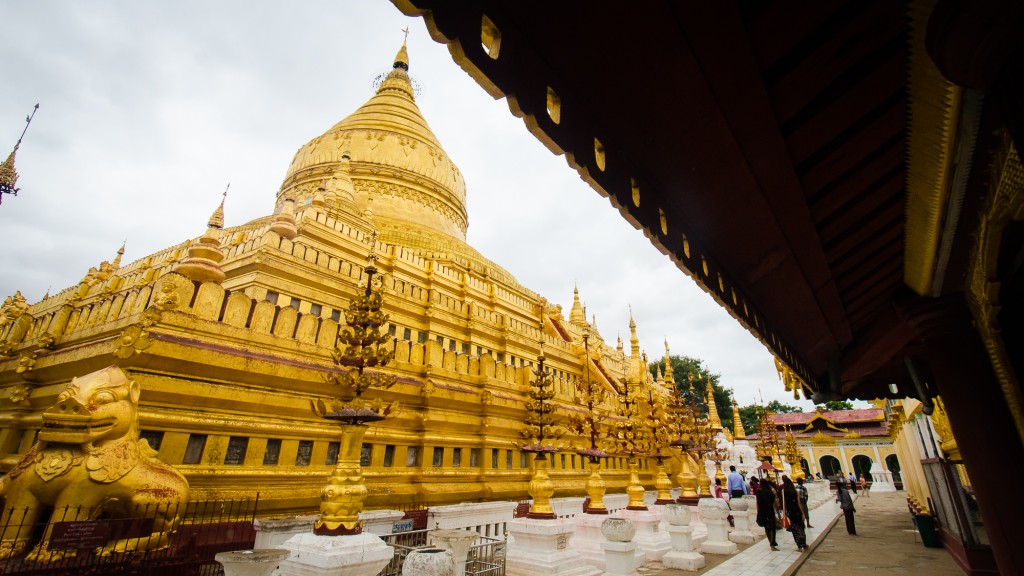
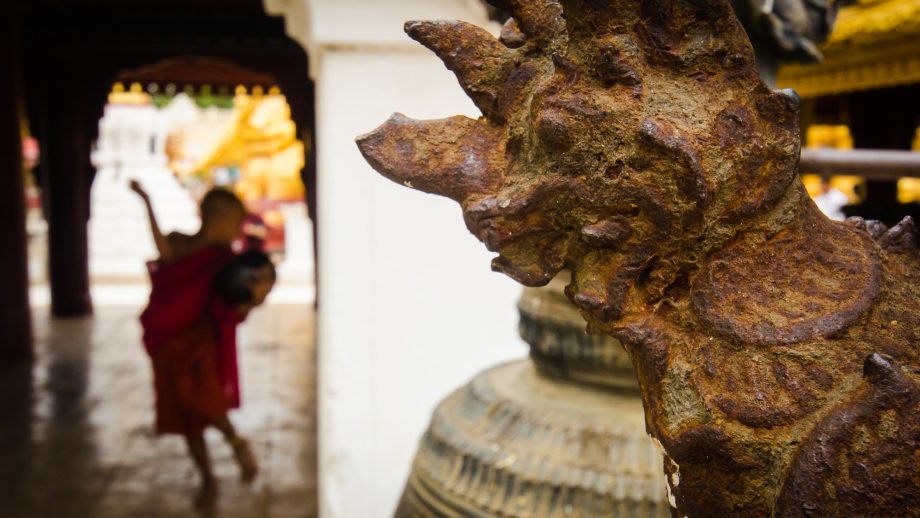 I personally disliked the Shwezigon Pagoda and found its garishness and ostentatiousness to be somewhat disconcerting, albeit no where near as bad as the Shwedagon Pagoda in Yangon. There were also a number of monks in the compound that were asking for alms, with a few that had the audacity to ask for money in an impudent manner, almost as if it were expected that I give them my money. I ended up leaving the temple in a hurry and found myself wondering about the supposed frugal and austere lives that these monks were supposed to be living...
I personally disliked the Shwezigon Pagoda and found its garishness and ostentatiousness to be somewhat disconcerting, albeit no where near as bad as the Shwedagon Pagoda in Yangon. There were also a number of monks in the compound that were asking for alms, with a few that had the audacity to ask for money in an impudent manner, almost as if it were expected that I give them my money. I ended up leaving the temple in a hurry and found myself wondering about the supposed frugal and austere lives that these monks were supposed to be living...

